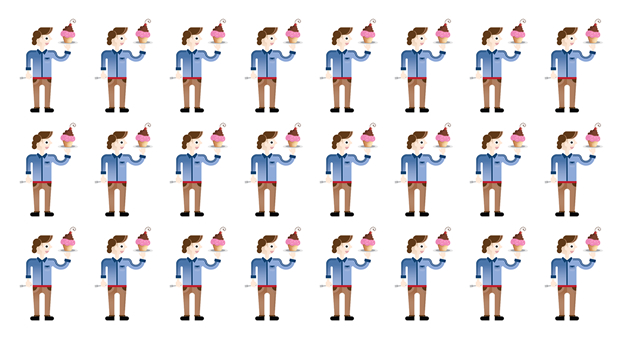Want a first class employer brand? Then the experience you give your customers / candidates is key. Tony Layton, MD of Words&Pictures (an agency that helps organisations communicate better), shares his thoughts on the “experience economy”…
Ever had a lousy “customer experience”? Or what’s worse…a lousy experience when talking to a customer services team member? Me too. Only scores of times.
The phrase ‘Customer Experience’ first emerged in a Harvard Business Review article written by Joseph Pine and James Gilmore the year before they produced the book, The Experience Economy in 1999. It was here where the scholars expounded their theory of how economies change – “recapitulated” in their four-stage theory of the birthday cake. It went like this…
Phase 1:
In the agricultural economy mothers baked cakes from scratch, mixing farm commodities (eggs, flour etc, at a time when 90% of the American workforce worked on farms).
Phase 2:
As the industrial economy advanced, mums (and dads) started paying a dollar or two to companies like Betty Crocker (great name for a baker, no?) for premixed ingredients to make yummy birthday cakes for their children.
Phase 3:
When the service economy took hold, parents bought cakes (costing perhaps ten times that of the previous era).
And finally…
Phase 4:
Many parents now outsource their kids’ birthday “event” to companies which stage such children’s celebrations – and “often throw in the cake for free”.
Pine and Gilmore rung in the changes in their article by saying: ”Welcome to the emerging experience economy.”
Most of us now operate in this ‘experience economy’, although some of us apparently attend virtual birthday parties too – do people eat cake there? – in the guise of our much more attractive avatars. Avatars aside, what can we in the communications industry draw from the work of Pine and Gilmore? And how might we change what we do?
The ‘experience economy’ suggests that service providers should be very clear in understanding the emotional impact of their operations…”dancing with customers” is one way others put it. (At Words&Pictures we speak at length about the relationship triangle where having the goal of a bond with clients comes at the apex).
We might also draw something from the (unfortunately named) PIS acronym on customer experience: Preparation, Interaction and Sensation. How should we prepare to deal with clients? What’s the actual interaction like when we’re with them, and what sensation do we – or should we – leave them with?
Now, apparently, everyone’s “doing it” – that is engaging in the experience economy. But are customers and clients actually feeling good about it? As customers, many of us don’t feel great after that awful call in which we’ve been rerouted and rerouted so many times we’ve even forgotten the reason for the call in the first place.
Many large organisations have put in place “bastardised CRM systems” which ape the principles of the ‘experience economy’, but they often leave us customers bewildered, or simply PIS(s)ed off.
At Words&Pictures, we try to do the opposite. Give clients a great experience…delight them. We don’t always succeed but it’s worth trying.
Largely through what Pine and Gilmore would call our “orchestrators” – our excellent client managers (CMs) – we try to delight clients with our work. But it’s not just the CMs. Everyone in the business should be doing it – especially in small businesses like ours.
In the studio it’s all about being obsessed with quality and creativity – for the benefit of clients: in administration, it’s about seamlessly pulling it all together behind the scenes; in BD it’s about offering insights which add value and bring real benefit.
In what P&G’s AG Lafley would call the “moments of truth” – in our case in client meetings, and all other touchpoints with clients – we need to think like our clients, stand in their shoes, understand their ‘experience”…keep them delighted. It’s a pretty good goal. And it seems to work.

